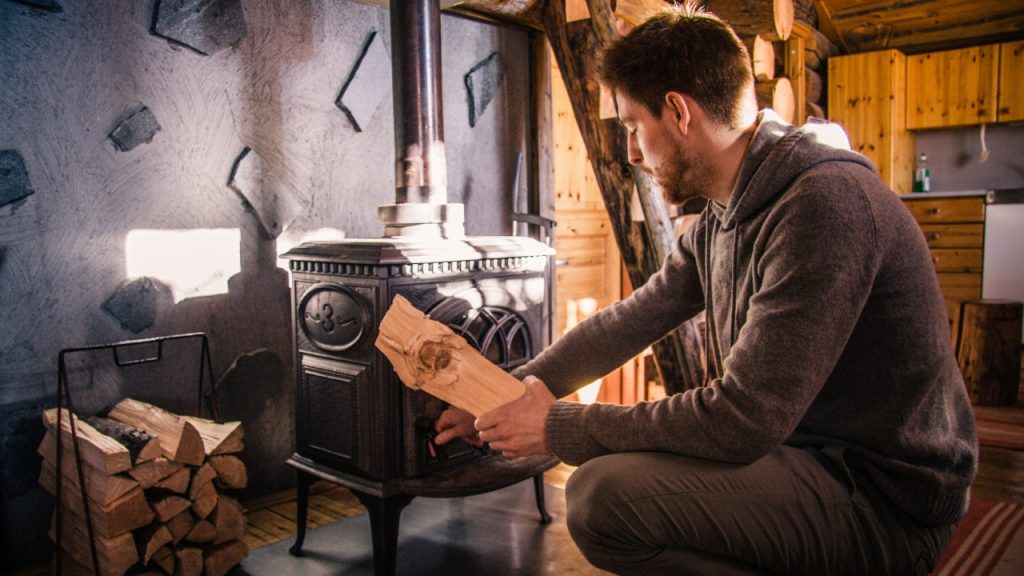Your wood stove may provide a pleasant ambiance on cold winter days or it may be a vital source of heat for your home, but it also holds potential danger if misused or poorly installed. Because of this, insurance companies that cover wood stoves may charge more for homeowners insurance for wood burning stoves. If you own a wood burning stove, this guide by Bankrate’s insurance editorial team may be a useful resource for you as you consider wood burning stove insurance requirements.
Will homeowners insurance cover my wood stove?
The EPA estimates that approximately 12.5 million wood stoves are in operation across the U.S. and that 65 percent of all wood stoves are old, inefficient and possibly dangerous due to leaking fumes and confined fires within chimneys and flues. Because of this risk, homeowners insurance companies may adjust rates accordingly for anyone using a wood stove as a major source of heat.
Having a wood stove does not automatically disqualify you for coverage. However, it is very likely your provider will want to verify that the stove is properly installed. Fortunately, this process may be as easy as taking a picture of your wood stove. Insurance companies may want to verify the following:
- Your wood stove’s make and model
- The stove’s connection to your home’s chimney
- The proper amount of fire guards are in place (such as a fire safety rug)
If it cannot verify any of the above information in a photo, or if a more comprehensive evaluation is required, your home insurance company may require an inspector to come to your home and inspect your wood stove.
What are the insurance requirements for wood burning stoves?
If you are planning to install a wood stove in the future, it is best to notify your insurer in advance. You can then discuss the conditions for coverage, which may vary according to the provider, but usually include professional installation and a safety inspection by a licensed inspector.
If the wood stove is old and has been in place for a while, your provider may have some requirements to fulfill. Having the wood stove inspected by a certified technician to ensure it complies with local code regulations may be a part of that process. Fire codes frequently change, and the old stove may not meet today’s standards.
If you are planning on putting a wood stove in your home, it is generally advised to get a licensed contractor to install it for you. When not properly installed, wood stoves put houses at a severe risk of fire and extensive damage. Smoke can spread quickly throughout the house and lead to carbon monoxide poisoning, and chimney fires can rapidly escalate to whole house fires. In fact, three out of ten house fires that are correlated with home heating are due to poorly maintained fireplaces and dirty chimneys, according to the EPA.
An inspection is important because if it is determined during a claim that a house fire was caused by an improperly installed wood stove, your claim could be denied due to negligence.
Will I pay more for homeowners insurance with a wood stove?
The presence of a wood stove in your home could potentially lead to higher homeowners insurance premiums. This is because wood stoves carry a higher risk of fire damage compared to other heating methods. Here are some key points to consider:
- Increased fire risk: Wood stoves, unlike gas or electric fireplaces, involve direct flame, producing smoke, ash and creosote/soot buildup. These factors can significantly elevate the risk of fire.
- Operational safety concerns: Operating a wood stove requires more steps than a gas or electric fireplace. It involves creating a draft to prevent smoke buildup and burning kindling beneath larger wood stacks. This process can lead to risks like embers escaping onto the floor or smoke accumulation within the home.
- Creosote accumulation: A long-term risk of using wood stoves is the buildup of creosote in the chimney, a substance that is highly flammable and poses health risks. Without proper maintenance, such as installing a steel liner, the risk of a chimney fire increases.
- Insurance company perspective: Insurance providers may view homes with wood stoves as higher risk, potentially leading to increased premiums. The insurer might also require specialized inspection or proof that the stove meets safety and construction codes.
- Maintenance and installation factors: Regular maintenance and correct installation are crucial. If an insurance company discovers that a wood stove hasn’t been properly maintained or installed, it could affect your eligibility for claim reimbursement in the event of a fire.
While wood stoves add a cozy ambiance, they bring certain risks that might affect your insurance rates and eligibility. It’s important to weigh these factors and consult with your insurance provider to understand how a wood stove might impact your policy.
Is insurance cheaper for a pellet stove than a wood stove?
Pellet stoves, which burn compacted wood pellets, generally require less manual intervention than wood stoves. They often feature an automated system for adding pellets, allowing for more controlled and efficient heating. When compared to wood-burning stoves, there are some key differences to consider that could affect your insurance premiums.
- Installation and venting requirements: Both stoves need professional installation to ensure safety and compliance with local codes. Wood stoves require a chimney, while pellet stoves can use either a chimney or a vent, offering more flexibility in placement within your home.
- Burning process and fire risk: Pellet stoves are typically considered safer and more heat-efficient due to their controlled burning process. In contrast, wood stoves demand more regular maintenance and pose a higher risk of fire hazards.
- Fuel source: Pellet stoves use compact wood pellets, rather than logs, which means no outdoor wood pile on your property. This can help reduce the other risks associated with wood piles, like termite and rat infestations — which are not typically covered by insurance — that could cause damage to your home. Pellet stoves do require an electrical power source, and this power source should be regularly inspected to ensure it’s in good working order.
While pellet stoves might offer certain advantages in terms of ease of use and safety, the specific impact on insurance costs can vary. It’s important to consult with your insurance provider to understand how either a wood stove or a pellet stove could influence your policy.
Frequently asked questions
Read the full article here
















